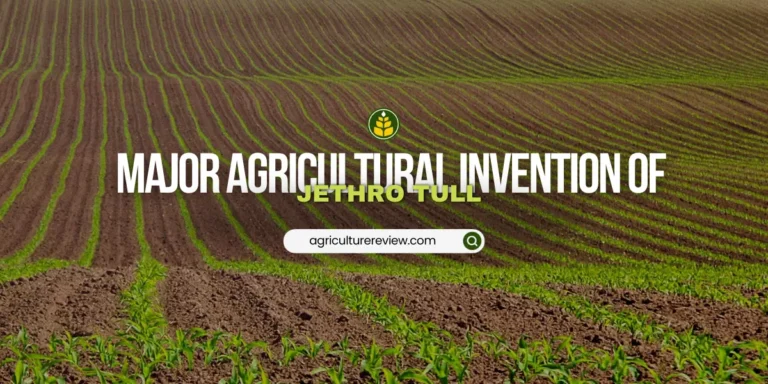This ultimate guide on cultivation of tomato will help you in practicing tomato farming in your farmland. Moreover, get to know fertilizers, irrigation, requirements to get higher yield.
Tomato is one of the major vegetable crop in the world. People love consuming tomatoes because of its taste as well as its nutritional values. This means the demand of tomato in the market is always high.
So if you are farmer willing to start a tomato farm then it is definitely a good choice. But before learning about tomato cultivation guide let’s learn few important points about tomato crop.
Table of Contents
परिचय
Botanically tomato is a fruit but culinary experts consider it as vegetable. That’s why we call it a fruit vegetable. Tomato is a self pollinated crop that can be annual या short lived perennial depending on cultivar and climate.
You can cultivate determinate and indeterminate types of tomato in your tomato farm. Determinate tomatoes grows up to a certain fixed height and are also known as dwarf ones. They generally grows up to maximum height of 4 to 5 feet.
While indeterminate tomatoes are vining plants. They continue to grow their length in complete growing season. But this type of tomato give slow and steady supply of tomatoes.
Which means that if you want to harvest larger quantity of tomatoes at once then determinate type is a good choice.
वानस्पतिक वर्गीकरण
वानस्पतिक नाम: सोलेनम लाइकोपर्सिकम
परिवार: सोलेनेसी
गण: सोलानालेस
क्लास: Magnolipsida
डिवीजन: मैग्नोलियोफाइटा
गुणसूत्र संख्या: 12
स्रोत: tomatosphere.com
एलोवेरा की उत्पत्ति
Researchers believe that tomato originated in South America. प्राणिपालन और cultivation started in मेक्सिको by 500 B.C. Then explorers brought it to Europe and later on it spread to other parts of the world.
क्षेत्र और उत्पादन
In the world tomato farmers produces around 117,118,248 tonnes of tomatoes every year(Atlas Big). चीन is the largest producer of tomato. It produces around 56,423,811 tonnes of tomatoes every year. This is followed by India, United States Of America, Turkey, Egypt, Italy, Iran, Spain, etc.
भारत is the second largest producer with annual production of around 18,399,000 tonnes every year.
Tomato Cultivation Guide

मिट्टी की आवश्यकताएं
You can practice tomato farming in wide range of soil. But well drained, deep, sandy loam to loamy medium black coloured soil is considered ideal for cultivation of tomato. Make sure that soil pH to be in range of 6 to 7 i.e. slightly acidic to neutral soil.
If the soil is not well drained then construct drainage channels and slope to avoid waterlogging in tomato farm.
जलवायु और तापमान
You can cultivate tomato in a wide range of climate. They can grow in tropical as well as in temperate climate depending on the cultivar. However tomato crop can not withstand frost and high humidity.
तापमान below 16 degrees Celsius और above 28 degrees Celsius is not good for tomato farming. It results in stunted growth and poor yield. Whereas Optimum temperature range of 21 to 24 degrees Celsius is ideal.
For germination of seeds temperature range of 18 to 28 degrees Celsius is considered ideal.

खाद
You can apply 25 tonnes of Farm Yard Manure per hectare during preparation of field to increase fertility of the soil. At the same time you can also use जीवामृत या sanjeevak to enhance the soil health.
In one hectare of land you should apply 75 Kilograms of नाइट्रोजन, 40 Kilograms of फास्फोरस(P2O5), and 25 Kilograms of पोटेशियम(K2O).
Apply full doze of phosphorus and half dozes of nitrogen and potassium before transplantation. Apply rest doze of potassium and 1/4th doze of left nitrogen 20 to 30 days after transplantation. You can apply the rest fertilizers after 2 months.
सिंचाई
Irrigation is the most critical step in tomato farming. If you irrigate tomato farm heavily after a long dry spell then it can cause cracking of the fruits. Therefore give light irrigations in the interval of 3 to 4 days after transplantation.
However interval can vary according to rainfall and soil type. For kharif crop you can irrigate at an interval of 7 to 8 days. And for Rabi crop at an interval of 10 to 12 days.
कीट और रोग
कीट such as fruit borers, white flies, leaf miners, root-knot nematode, mealy bugs etc. can harm your crop. I prefer to use yellow sticky traps in the tomato farm to prevent any flying pest attack. However under serious pest attack you can follow these control measures:
| पेस्ट | Control Method |
|---|---|
| Fruit Borer | Spray Bacillus thuringiensis @2grams per litre |
| Leaf Miner | Spray 5% NSKE |
| मीली बग | Use Phosphomidon 40 SL 2 ml per litre |
| White Fly | Spray Carbofuran 3G @ 4 TO 5 Kilograms per acre |
Moreover, do not forget to remove and destroy infected parts of the crop to stop any spread.
रोग like damping off, early blight, tomato leaf curl, fusarium और bacterial wilt, septoria leaf spot etc. can damage your crop. You can easily follow these control measures:
| रोग | Control Method |
|---|---|
| Damping Off | Drenching with Copper Oxychloride 0.2% |
| Early Blight | Spray Mancozeb 0.2% |
| Fusarium Wilt | Crop rotation and spot drenching with Carbendazim 0.1% |
| Bacterial Wilt | Crop rotation and apply 10 Kilograms bleaching powder per hectare |
| Septoria Leaf Spot | Spray Mancozeb 0.2% |
| Bacterial Leaf Spot | Spray organic fungicide at 5 to 10 days interval |
| Tomato Mosaic Virus | Crop rotation with tobacco, brinjal, potato or chilli |
| Tomato Leaf Curl Virus | Spray Dimethoate 0.05% |
| Tomato Spotted Wilt Disease | Spray Imidachloprid 0.05% |
However if you want to practice organic tomato farming then you can use neemastra, aagneyastra, or jeevamrut to control pests and diseases.





